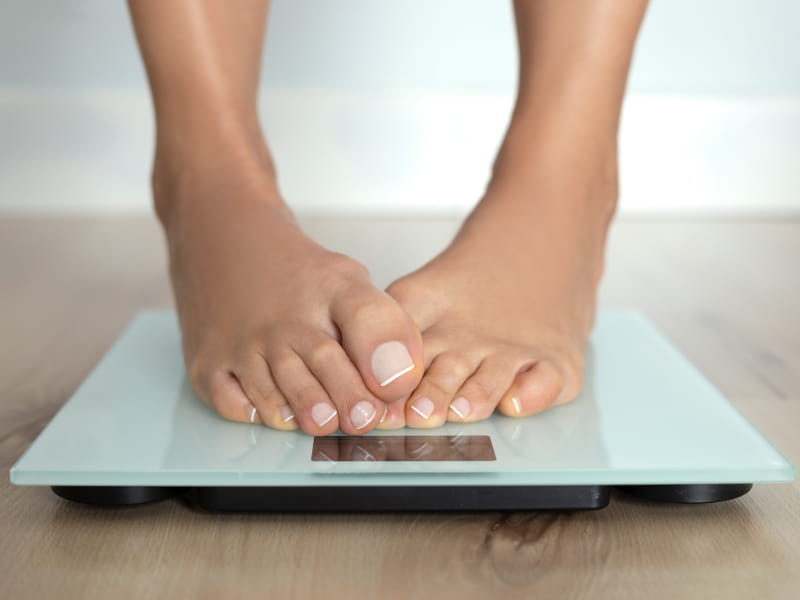Eat healthy, move your body to avoid 'the COVID-19'
By American Heart Association News

Move over, "Freshman 15." There's a new belt-busting threat fueled by the coronavirus pandemic cramming Americans into their homes, dangerously close to their snacks, suds, sodas, sofas and streaming videos.
Beware gaining "the COVID-19."
While this repurposing of the disease's name obviously is lighthearted, the struggle is real. After all, the current situation is a recipe for weight gain.
It doesn't have to be, though.
In fact, just as simple things like washing hands, staying home and keeping 6 feet apart when in public can help slow the spread of the coronavirus, easy options exist for eating healthy and being active. In fact, social media feeds are filled with them.
"The bad news is that we have to contend with the virus," said Linda Van Horn, chief of the nutrition division in the Department of Preventive Medicine at Northwestern University's Feinberg School of Medicine in Chicago. "The amazingly good news is that, unlike conditions during the Spanish flu or the bubonic plague, we have the entire internet at our disposal."
Van Horn mentioned another, even better reminder: The pandemic eventually will end.
So, she asked, wouldn't it be great to emerge at the same weight and fitness level as before … or better? And if you didn't follow a healthy diet or have a consistent workout routine, wouldn't developing one – or both – be a successful takeaway heading into the "new normal" we'll all soon be facing?
"My goal for myself and all the people I love and care about is to come out of this thing happier, renewed, refreshed and knowing more than ever what matters most," said Tina Johnson, a certified athletic trainer, fitness model and bodybuilding judge in Richmond, Virginia.
Once the motivation arrives, then it's time for some guidance. Johnson and Van Horn can help.
For eating healthy, Van Horn recommends starting by "taking stock of what's in your refrigerator, freezer, cupboard and pantry."
If you don't see many fruits, vegetables, whole grains, beans and nuts, put them on the shopping list. If you see lots of chips, cookies and other junk food, think twice about putting them in your grocery cart.
"This is an opportunity to say, 'If I don't buy it, I don't have it. And if I don't have it, I don't eat it,'" Van Horn said.
Since most people suddenly have extra time on their hands – she's saved three hours per day by not commuting to work – Van Horn suggests investing a few minutes into meal planning.
"Once again, go back to your friendly internet and discover the countless recipes you can make with rice, beans, whole grains, fruits and vegetables," she said. "Try some new cuisines. Have a Greek night or an Asian night."
She also urges getting cooking help from children – of all ages.
"I teach nutrition and it's surprising how few millennials and Gen Xers know how to cook," Van Horn said. "This is an opportunity for parents not only to teach kids how to cook, but also to teach them how to be healthy, while working together as family. It's a win-win-win."
One last tip from Van Horn: Think twice about what you're drinking.
"I'd sure rather eat my calories than drink them," she said.
Water, black coffee or tea are good choices. For a treat, Van Horn said, "I buy lemons and limes and squeeze them into club soda or something else that's effervescent."
Something cold and zesty might taste especially good after a workout, even if it's only a walk around the neighborhood. For those who are newly homebound, such a stroll is a great way to replace the number of steps your body is accustomed to taking, Johnson said.
"Just do something," she said. "Make sure you get out of your chair or sofa at least once an hour. Stretch. Move around. Carve time to walk the dog or play outside with your kids. It doesn't have to be taxing. It will also help with your mood."
Johnson knows from experience.
She went from the sleek physique of a college sprinter to wearing a size 12 dress in her 30s. Then a life insurance company asked her to get a checkup. It became her wake-up call. Motivated by a plaque commemorating her track career that hung in her bedroom, she slimmed to a size 4 and became a competitive bodybuilder. She wears a rubber bracelet that reads, in all caps, "Winning at Life."
So, fitness is more than her job. And now that job is on hold. She so badly misses her clients and workout buddies that she cried while recording a video meant to encourage her boot campers.
For her individual clients, Johnson has emailed routines they can do at home based on available equipment. For newcomers without a home gym, she said YouTube offers plenty of how-to videos using only bodyweight exercises.
Johnson also is setting up online classes and has started her personal training clients on a guided squat challenge.
Since her pace may be too frantic for many people, her advice is to figure out what you're willing to do, then get after it.
"Exercise," she said, "is always the best medicine."
Editor's note: Because of the rapidly evolving events surrounding the coronavirus, the facts and advice presented in this story may have changed since publication. Visit Heart.org for the latest coverage, and check with the Centers for Disease Control and Prevention and local health officials for the most recent guidance.
If you have questions or comments about this story, please email [email protected].





